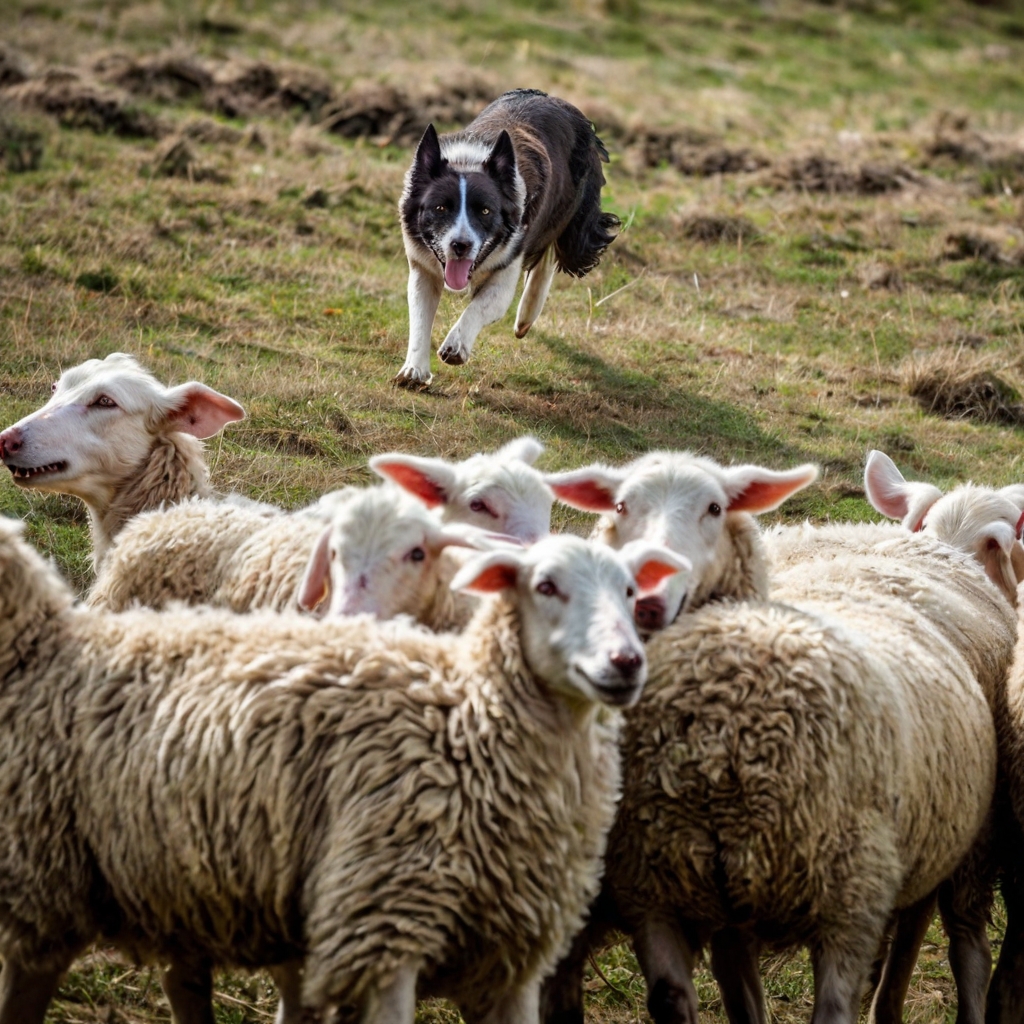The history of herding dates back to the Neolithic period, around 10,000 years ago, when humans first began domesticating animals. During this time, humans transitioned from a nomadic, hunter-gatherer lifestyle to one that was more sedentary and agricultural. As populations grew and settled in one place, the need to manage and care for large numbers of animals became increasingly important. Herding, which involves the management and movement of animals from one place to another, became a crucial aspect of this new way of life.
Early herding practices were likely driven by the need to find food and water for the animals, as well as to protect them from predators. As time went on, herding became more sophisticated, with the development of specialized tools and techniques for managing different types of animals. For example, the use of dogs to help herd and protect animals became widespread, and the development of fences and enclosures allowed herders to keep their animals contained and safe.
Early Herding Cultures
Some of the earliest evidence of herding can be found in the ancient civilizations of the Middle East and Africa. In these regions, herding was often a communal activity, with multiple families or tribes working together to manage large herds of animals. The use of herding dogs, in particular, was widespread in these cultures, with breeds such as the Saluki and the Greyhound being used to help manage and protect animals.
In other parts of the world, such as Europe and Asia, herding practices developed differently. In these regions, herding was often a more individualized activity, with single families or small groups managing their own herds of animals. The use of horses and other equines, in particular, became important in these cultures, with the development of specialized breeds and equipment for herding and managing animals.
Types of Herding
There are several different types of herding, each with its own unique techniques and strategies. Some of the most common types of herding include:
- Pastoral herding, which involves managing and caring for animals in a pasture or grazing environment
- Range herding, which involves managing and caring for animals in a more open, range-like environment
- Feedlot herding, which involves managing and caring for animals in a more confined, feedlot environment
- Nomadic herding, which involves managing and caring for animals as part of a nomadic or migratory lifestyle
Each of these types of herding has its own unique challenges and requirements, and herders must be skilled in a variety of areas, including animal behavior, nutrition, and health care. In addition, herders must also be knowledgeable about the land and environment, including the types of plants and water sources available, and how to manage and care for the animals in a sustainable and responsible way.
Modern Herding Practices
Today, herding is still an important part of many agricultural and livestock operations around the world. However, modern herding practices have evolved significantly from those of the past, with the use of new technologies and techniques. For example, many herders now use GPS and other electronic tools to help manage and track their animals, and the use of drones and other aerial vehicles is becoming increasingly common for monitoring and managing large herds.
In addition, modern herding practices often prioritize sustainability and environmental responsibility, with herders working to minimize their impact on the land and environment. This can involve using techniques such as rotational grazing, which helps to maintain the health and diversity of the land, and reducing the use of antibiotics and other chemicals in animal care.
Challenges and Opportunities
Despite its importance, herding is not without its challenges. Many herders face difficulties in terms of accessing land, water, and other resources, and the impact of climate change and other environmental factors can be significant. In addition, the use of new technologies and techniques can be expensive and require significant investment, which can be a barrier for many herders.
However, there are also many opportunities for herders to innovate and adapt, and to find new and more sustainable ways of managing and caring for their animals. For example, the use of regenerative agriculture practices, which prioritize soil health and biodiversity, is becoming increasingly popular, and the development of new breeds and types of animals is helping to improve the efficiency and effectiveness of herding operations.
Overall, the history of herding is a rich and complex one, with a wide range of cultures and practices involved. From the early herding cultures of the Middle East and Africa, to the modern herding practices of today, herding has played a crucial role in the development of human societies and the management of the natural world.
